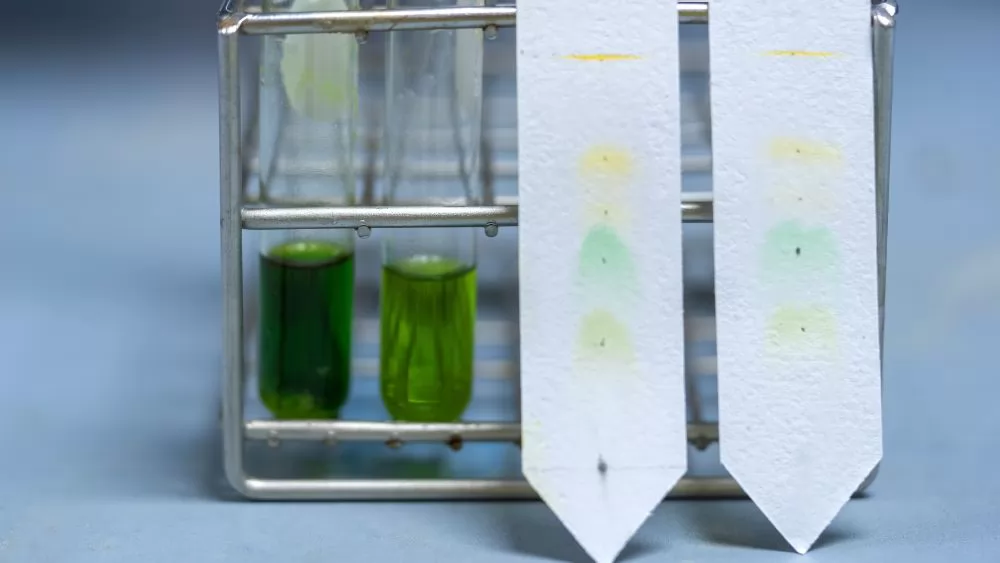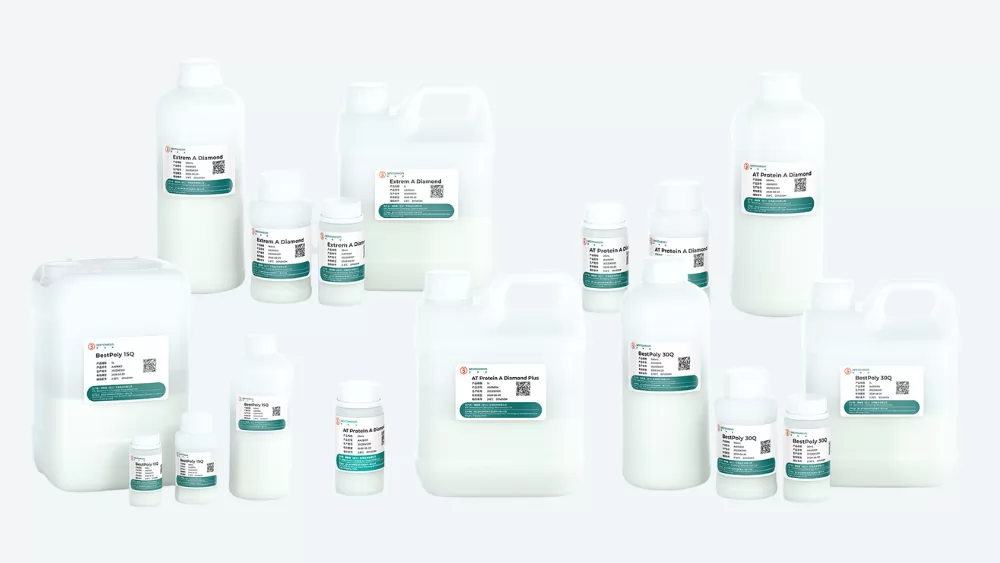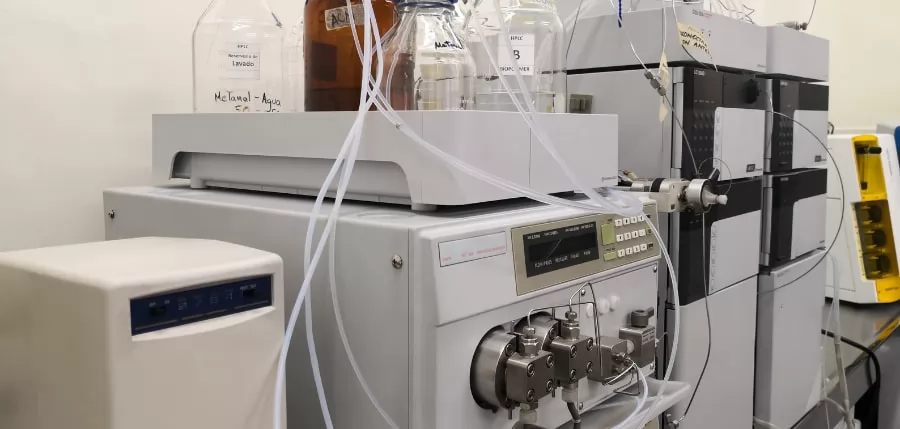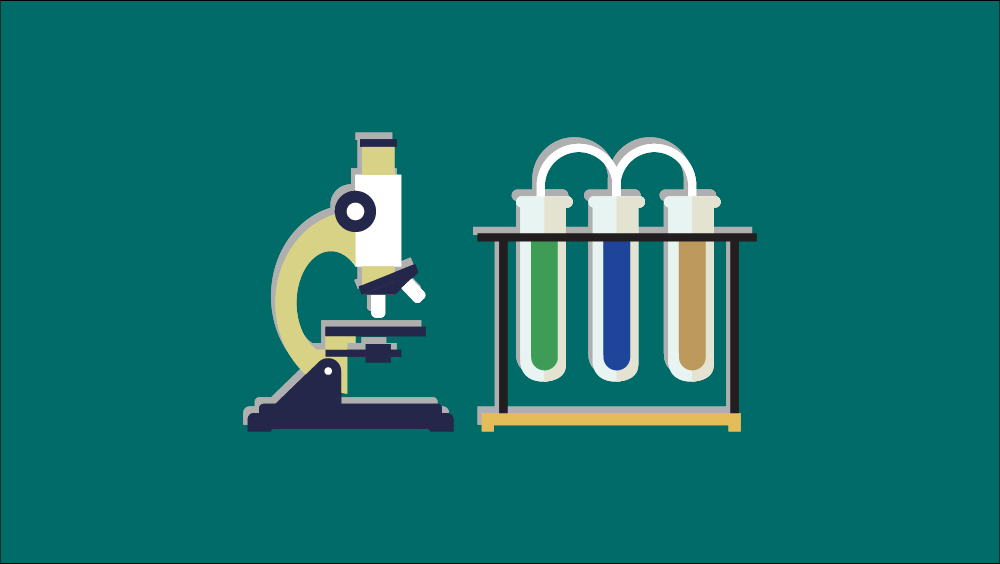What are chromatography resins, composition, uses, types?

Chromatography resin may not be as simple as you think; it can come in many types, uses, and benefits. Before purchasing, make sure you understand the background and importance of chromatography resins in today's industry.
From this article you can learn:
-
What is Chromatography Resin and What does It Do?
-
What does Chromatography Resin Consist of?
-
What Makes a Good Chromatography Resin?
-
What are the Common Classifications of Chromatography Resins?
-
What Industries are Chromatography Resins Suitable for?
-
The Importance of Chromatographic Resins
-
Global Chromatography Resins Market Forecast 2024-2028
-
Frequently Asked Questions (FAQs)
-
Conclusion
What is Chromatography Resin and What does It Do?

Chromatography resin (also called chromatographic medium) is a crucial material used in a scientific technique called chromatography, which is employed to separate and purify different components in a mixture. Chromatography resin plays a pivotal role in this process. Essentially, it is a solid or porous matrix that is packed into a column or used in a bed format.
Its primary function is to interact selectively with the various molecules in the sample being analyzed. These interactions can be based on factors like size, charge, hydrophobicity, or affinity, depending on the type of chromatography being performed.
In summary, chromatography resin is a versatile material that aids in the separation and purification of compounds or biomolecules in a mixture by exploiting their unique interactions with the resin's matrix.
What does Chromatography Resin Consist of?
Chromatography resin consists of a solid or porous matrix, which can be made from various materials like polymers, silica, agarose, or other suitable substrates.
These matrices serve as the backbone of the resin and provide structural support. What makes chromatography resin versatile and useful is its ability to be chemically modified with different functional groups.
These functional groups are attached to the matrix and determine the resin's specific properties and selectivity in the chromatographic separation process.
What Makes a Good Chromatography Resin?
Chromatography resin plays a key role in the successful separation and purification of biomolecules. Resin function is determined by ligands while resin specific property mainly depends on the matrix. By coupling various functional groups to base matrices in different bead sizes, pore sizes, and raw materials, chromatography resins serving various applications can be obtained.
For ideal resin, should enjoy merits including high selectivity, good resolution, high binding capacity, low back pressure, low non-specific adsorption as well as great physical/chemical stability, and easy linear scale-up so as to efficiently separate multiple complex components in mild operational conditions.
What are the Common Classifications of Chromatography Resins?
Depending on the type of chromatography resin used, chromatography resins with different functions can be selected. There are the following 5 main types.
|
Ion Exchange Resins |
These resins contain charged functional groups that can selectively interact with ions of opposite charge. They are used in ion exchange chromatography to separate molecules based on their ionic properties. |
|---|
|
Affinity Resins |
Affinity chromatography resins rely on binding interactions between a ligand immobilized to a resin and its binding partner. Because the interaction is so specific, high purity can be achieved in a single step. |
|
Size Exclusion Resins |
These resins are used in size-exclusion chromatography to separate molecules based on their size or molecular weight. |
|
Hydrophobic Interaction Resins |
Hydrophobic interaction chromatography (HIC) resins contain hydrophobic functional groups that interact with hydrophobic regions of molecules. They are used to separate molecules based on their varying degrees of hydrophobicity. |
|
Reversed Phase Resins |
These resins are commonly used in reversed-phase chromatography, where the stationary phase is nonpolar or hydrophobic, and the mobile phase is polar. They are often used for separating nonpolar or lipophilic compounds. |
|
Mixed-mode Resins |
These resins combine multiple interaction mechanisms, allowing for more complex separations. They can be used in situations where a single interaction mechanism is insufficient for separating complex mixtures. |
What Industries are Chromatography Resins Suitable For?

Chromatography resins find applications in a wide range of industries due to their versatility in separating and purifying various compounds and biomolecules. Some of the key industries where chromatography resins are commonly used include:
Pharmaceutical: Used in research, diagnostics and pharmaceutical manufacturing.
Biotechnology: e.g. monoclonal antibodies, vaccines and recombinant proteins.
Food and Beverages: Food additives used in the food and beverage industry
Environmental Analysis: Environmental Testing and isolation of Contaminants
Chemical Industry: For fine chemicals, petrochemical product purification, and research and development.
Academic and research institutions: an essential tool for academic and research laboratories
Petrochemicals: Chromatography resins are used for the separation and analysis of hydrocarbons and other compounds.
Cosmetics and Personal Care Products: Chromatographic resins are used in quality control of cosmetics, skin care products and fragrances.
The Importance of Chromatographic Resins
It's a fundamental tool in various scientific fields, such as chemistry, biochemistry, and biotechnology, allowing researchers to isolate and analyze specific components from complex mixtures, which is essential for applications like drug development, protein purification, and environmental monitoring.
Global Chromatography Resins Market Forecast 2024-2028
The global chromatography media market size was valued at USD 2.8 billion in 2023 and is expected to reach USD 4.1 billion by 2028, growing at a CAGR of 8.2% during the forecast period. The market growth of chromatography media is driven by two key factors: the growing demand for biosimilars and the continued expansion of pharmaceutical and biopharmaceutical R&D activities.
In particular, the growing demand for biosimilars in the Asia Pacific region has driven the demand for chromatography media, while further growth is expected in the US and Japan. With the continued increase in R&D spending, the demand for chromatography media is expected to grow, playing an integral role in the development of various drugs.
Source: Chromatography Resin Market Size, Trends Report, [Latest]
Frequently Asked Questions (FAQs)
_1700017941_WNo_900d429.webp)
The following are common FAQs for chromatography resins
① How are chromatography resins made?
Chromatography resins are made through a process involving matrix selection, functionalization, activation, washing, and quality control.
② What factors influence the choice of chromatography resin?
Selection depends on the type of chromatography, target molecules, and the desired separation characteristics, including size, charge, hydrophobicity, or affinity.
③ How do I store chromatography resins?
Chromatography resins should be stored in a dry, cool place and protected from contamination. Follow the manufacturer's recommendations for storage conditions.
④ What is the shelf life of chromatography resins?
The shelf life varies depending on the resin type and manufacturer. It can range from months to several years. Check the resin documentation for specific information.
⑤ are there safety considerations when working with chromatography resins?
Users should follow safety guidelines for handling chemicals and wear appropriate protective equipment when working with resins, especially if they contain hazardous functional groups.
Conclusion
Bestchrom has more than 15 years of manufacturing and sales experience in chromatography resin technology, helping you reduce purchasing costs while improving product quality. For more information on chromatography resins, please contact us here to speak with an engineer or request a quote. We can guide you through developing a chromatography resin solution that's right for your project.
Related content recommendation
How to choose a chromatography resin manufacturer
5 Different Types of Chromatography Resins, How to Choose?
What affects the service life of chromatography resins?
The application of chromatography resin in blood products purification
The application of chromatography resin in recombinant protein purification









.png)


